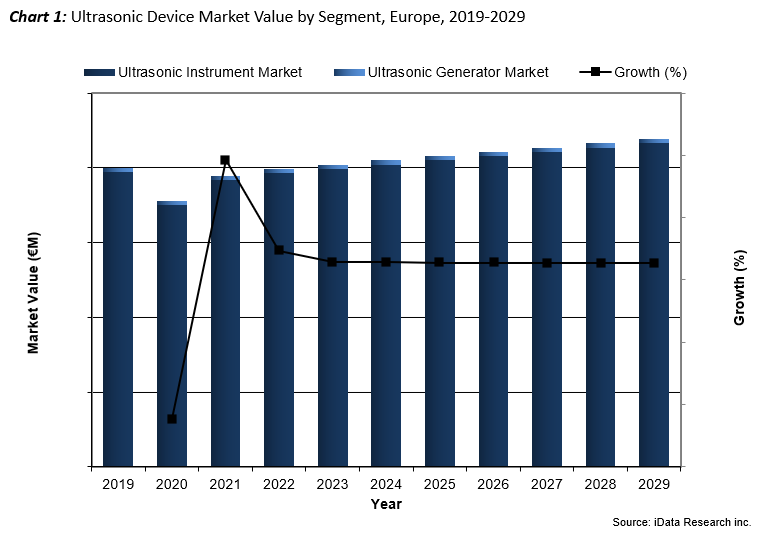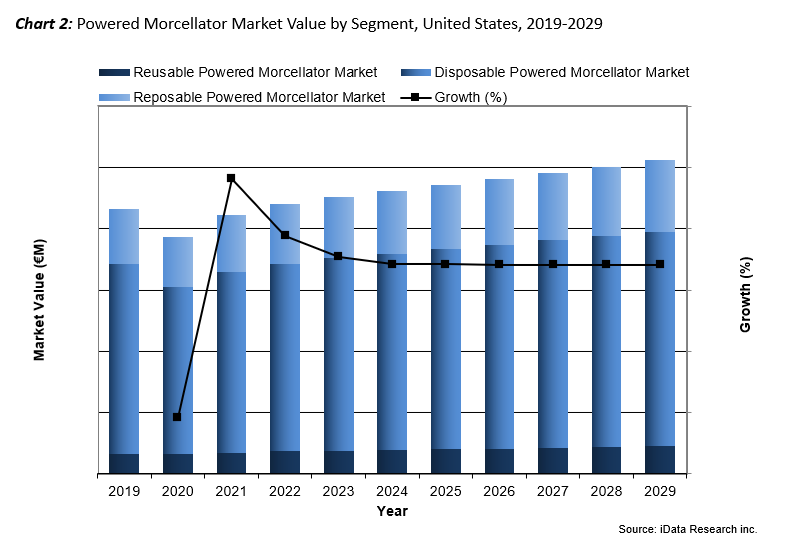Western Europe has witnessed substantial growth in the laparoscopy market, driven by the increasing demand for minimally invasive surgical techniques. Laparoscopy, a procedure involving small incisions, offers a range of advantages over traditional open surgery, including reduced pain, shorter recovery times and smaller scars. The prevalence of chronic diseases and health issues has contributed to the growing demand for minimally invasive surgeries, which has fueled market expansion. Nevertheless, certain factors hinder the market’s growth, including the high cost associated with laparoscopic procedures and equipment, as well as the adverse effects of the COVID-19 pandemic on elective surgeries.
The laparoscopy market in Western Europe is segmented by application, which encompasses gynecological surgery, urological surgery, general surgery, and other procedures. Among these segments, gynecological surgery holds the largest market share due to the increasing incidence of gynecological disorders and the surging demand for minimally invasive hysterectomies. Technological advancements in laparoscopic equipment and techniques, including robotic-assisted laparoscopic surgery, have enhanced precision and control during complex procedures. However, the adoption of robotic surgical platforms may impact the traditional laparoscopic device market.
Several noteworthy trends are shaping the market landscape in Western Europe. These include pricing pressures, strong growth in the ultrasonic device market and the lesser stigma of powered morcellation comparatively to America. As the demand for minimally invasive surgical techniques continues to rise, the laparoscopy market is expected to witness sustained growth in the forthcoming years. However, addressing challenges such as high costs and mitigating the negative impacts of COVID-19 will be crucial to fully optimize the potential of the laparoscopy market in Western Europe.
Pricing Pressures in the European Laparoscopic Market
The European laparoscopic market faces multiple significant pricing pressures which impact its overall market dynamics. Government healthcare systems in many European countries prioritize cost containment, leading to stringent price regulations and reimbursement policies. Hospitals and healthcare facilities within the EU often have budget constraints that impact their purchasing decisions. Devices that offer cost savings, efficiency improvements or better patient outcomes may be more appealing to these institutions. Therefore, healthcare systems within the EU often negotiate prices with medical device manufacturers, especially for high-volume purchases. Bulk purchasing agreements can lead to discounts or special pricing arrangements.
This creates challenges for laparoscopic device manufacturers in maintaining profitability and sustainable growth. Additionally, the presence of price-sensitive buyers and competitive bidding processes further intensifies pricing pressures. In an effort to control healthcare expenditures, European healthcare systems often negotiate lower prices for laparoscopic devices, which can affect manufacturers’ margins. As a result, companies operating in the European laparoscopic market must navigate this landscape by focusing on innovation, cost optimization, and demonstrating the value proposition of their products to overcome pricing pressures and maintain a competitive edge.
Strong Growth in the Ultrasonic Device Market
The ultrasonic laparoscopic device market in Europe has seen strong growth in recent years, and is projected to become a strong rival to the direct energy device market over the forecast period. The demand for minimally invasive surgical techniques and the advantages offered by ultrasonic devices have driven market expansion. These devices utilize ultrasonic energy to provide precise tissue dissection, coagulation and hemostasis during laparoscopic surgeries. With their ability to offer greater precision, minimal damage to surrounding tissues and improved surgical outcomes, ultrasonic devices have gained popularity among healthcare providers in Europe.
Technological advancements, such as tissue recognition and vessel sealing capabilities, have further enhanced the efficiency and safety of these devices. Due to ultrasonic energy’s precise dissection and effective hemostasis, operating times are often reduced compared to other traditional sealing and ligation method. Furthermore, ultrasonic devices produce less smoke and odor compared to electrosurgical devices, creating a more favorable environment in the operating room and potentially reducing the risk of surgical complications related to smoke inhalation.
The rising prevalence of chronic diseases and the increasing number of laparoscopic procedures in various specialties have contributed to the growth of the ultrasonic laparoscopic device market in Europe. Though this market has experienced strong growth, advanced direct energy devices still remain the dominant energy based surgical devices.

Powered Morcellation
The laparoscopic morcellation market in Europe has experienced significant growth in recent years, which has been driven by the increasing demand for minimally invasive surgical techniques. This market expansion is fueled by the numerous advantages offered by laparoscopic morcellation, including reduced postoperative pain, faster procedure times, shorter hospital stays and faster recovery times. Since this device is used in laparoscopy, there is minimal scarring on the patient, which is cosmetically favorable and contributes to increased patient satisfaction. As a result, the adoption of laparoscopic morcellation has become prevalent across various surgical specialties, such as gynecology, urology and general surgery.
The continuous advancements in morcellation devices and accessories have further contributed to the market’s growth, enabling more efficient and safe procedures. However, regulatory concerns regarding the potential risk of spreading undetected malignancies during morcellation have prompted the implementation of guidelines and recommendations to ensure patient safety. FDA warnings had a significant effect on the powered morcellation market in the United States; this effect was not nearly as damaging to the European market. Despite these challenges, the demand for laparoscopic morcellation remains strong, as patients and healthcare providers continue to prioritize minimally invasive approaches. With ongoing technological advancements and a focus on patient safety, the laparoscopic morcellation market in Europe is expected to continue its growth trajectory in the foreseeable future.

Conclusion
In the post-COVID era, the laparoscopic market in Western Europe continues to exhibit strong growth driven by the increasing demand for minimally invasive surgical techniques. Despite challenges such as pricing pressures, COVID-19 and concerns surrounding powered morcellation, the market is poised for sustained expansion.
Government regulations and cost containment efforts impose pricing pressures on laparoscopic device manufacturers, necessitating a focus on innovation and cost optimization to maintain competitiveness. Despite this, the market has seen strong growth in segments such as the ultrasonic device market, which has been driven by technological advancements and the demand for precise and efficient tissue dissection.
Advancements in laparoscopic approaches and robotic-assisted procedures further enhance patient outcomes. Additionally, the laparoscopic morcellation market demonstrates significant growth, with advancements in devices and accessories, although regulatory concerns regarding malignancy risks remain. As the demand for minimally invasive surgeries continues to increase, the laparoscopic market in Western Europe is poised for continued growth, provided that challenges are addressed effectively and patient safety remains a priority.
For more granular information, please see the report Laparoscopic Devices Market Size, Share & Trends Analysis – Europe – 2023-2029 – MedSuite by iData Research.
About the Authors
Nathaniel Bool is a research analyst at iData Research. He develops and composes syndicated research projects regarding the medical device industry, publishing the U.S. laparoscopic device report series.
Kamran Zamanian, Ph.D., is CEO and founding partner of iData Research. He has spent over 20 years working in the market research industry with a dedication to the study of medical devices used in the health of patients all over the globe.
About iData Research
For 19 years, iData Research has been a strong advocate for data-driven decision-making within the global medical device, dental and pharmaceutical industries. By providing custom research and consulting solutions, iData empowers its clients to trust the source of data and make important strategic decisions with confidence.